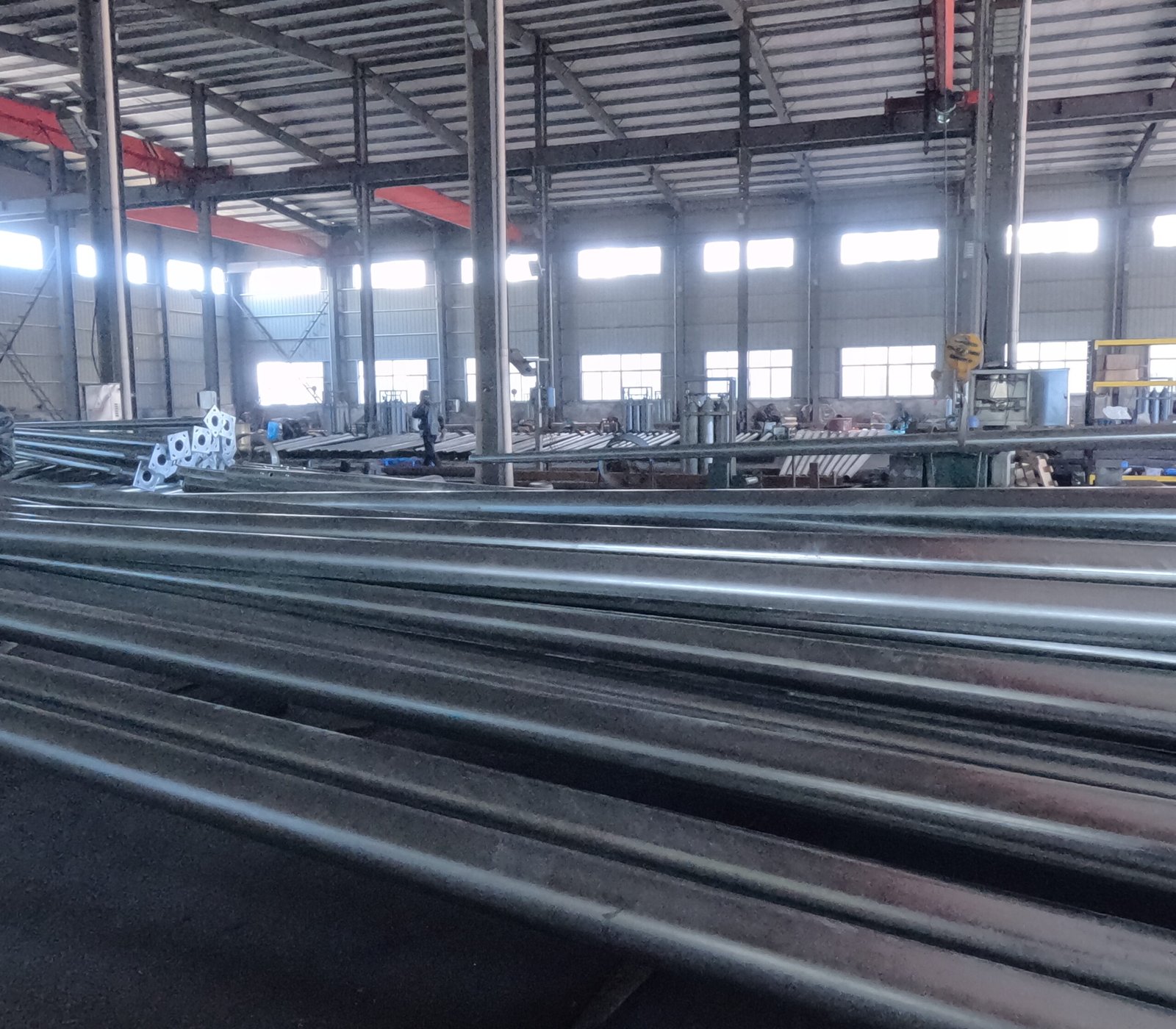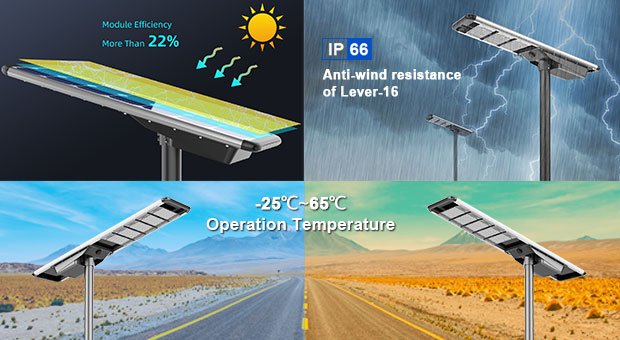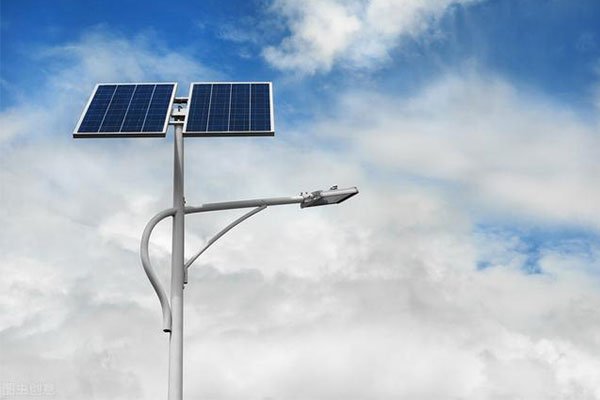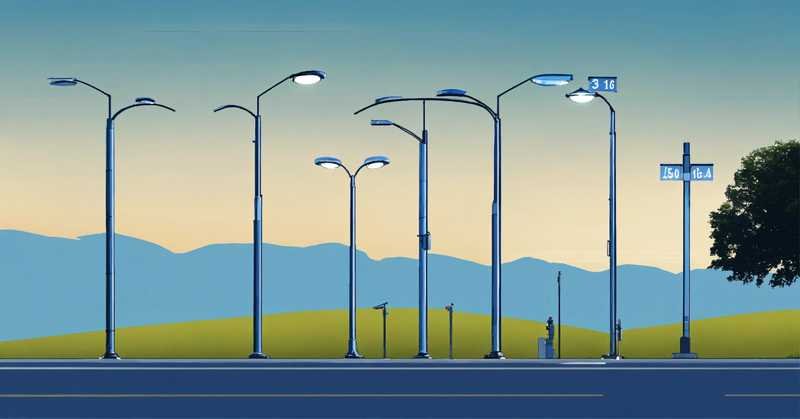Choosing the right pole for your LED solar street lights is crucial for ensuring proper illumination, durability, and cost-effectiveness. The best pole provides structural stability, withstands environmental factors, and integrates seamlessly with solar panels and batteries.
Selecting the wrong pole can lead to insufficient lighting, frequent maintenance, and unnecessary expenses. To make an informed decision, consider factors like height, material, wind resistance, and aesthetics.
Why the Right Pole Matters for LED Solar Lights?
A solar light pole is more than just a support structure—it affects efficiency, durability, and installation costs. Choosing the wrong pole can cause:
- Insufficient lighting coverage – Too short or tall, leading to dark spots or excessive glare.
- Structural instability – Weak poles that bend or break under environmental stress.
- Maintenance challenges – Corrosion, rust, or damage requiring frequent repairs.
- Aesthetic mismatches – Disrupting the visual appeal of the outdoor space.
By selecting the right pole, you optimize illumination, reduce maintenance costs, and enhance safety and aesthetics.
Understanding Solar Light Pole Sizes

Height Considerations
The height of a pole affects light distribution and intensity. Here’s a guide:
| Application | Recommended Height | Why? |
|---|---|---|
| Pathway & Garden Lighting | 3 - 8 feet (0.9 - 2.4 meters) | Provides downward illumination for safety and ambiance. |
| Residential Driveways & Entryways | 7 - 12 feet (2.1 - 3.7 meters) | Balances brightness and aesthetics. |
| Street & Parking Lot Lighting | 12 - 30 feet (3.7 - 9.1 meters) | Ensures broad illumination and prevents dark spots. |
| Security & Surveillance Lighting | 20 - 30 feet (6 - 9 meters) | Covers large areas, deters intruders. |
| Sports Fields & Large Areas | 40 - 100+ feet (12 - 30+ meters) | Maximizes visibility, minimizes glare. |
Pole Diameter & Structural Stability
The pole diameter ensures stability and wind resistance:
- Residential & Light Commercial Poles: 2 - 6 inches (5 - 15 cm)
- Heavy-Duty Commercial & Industrial Poles: 8+ inches (20 cm)
💡 Pro Tip: Always check wind resistance ratings and ensure the pole can support the weight of solar panels and battery packs.
Choosing the Best Material for Longevity & Performance
| Material | Pros | Cons | Best For |
|---|---|---|---|
| Aluminum | Lightweight, rust-resistant, easy installation | Less durable in high-wind areas | Residential gardens, pathways, decorative lighting |
| Steel | Extremely durable, wind-resistant, long-lasting | Requires rust prevention coating | Street lighting, parking lots, security lighting |
| Fiberglass | Corrosion-resistant, ideal for coastal areas, lightweight | More expensive, can degrade under UV exposure | Coastal and humid climates, industrial setups |
💡 Key Consideration: If your area experiences strong winds or harsh weather, opt for galvanized steel poles with anti-corrosion coatings.
Determining the Best Height for Maximum Illumination

Pathway, Garden, and Driveway Lighting
- Ideal Height: 3-7 feet (0.9-2.1 meters)
- Why? Soft glow for visibility without being overpowering.
- Material Recommendation: Aluminum or fiberglass for easy installation.
Commercial & Public Spaces
- Ideal Height: 10-30 feet (3-9 meters)
- Why? Ensures widespread illumination for safety.
- Material Recommendation: Steel for durability and wind resistance.
Security & Surveillance Lighting
- Ideal Height: 20-30 feet (6-9 meters)
- Why? Covers larger areas and prevents tampering.
- Material Recommendation: Heavy-duty steel.
Large-Area & Sports Lighting
- Ideal Height: 40-100+ feet (12-30+ meters)
- Why? Prevents shadows and glare while ensuring uniform light distribution.
- Material Recommendation: Reinforced steel for maximum stability.
Aesthetics: Blending Functionality with Design
Choosing the Right Design
- Sleek, Modern Styles – Ideal for contemporary landscapes (black powder-coated aluminum).
- Traditional, Ornate Designs – Best for historical or decorative settings (cast-iron or decorative fiberglass poles).
- Minimalist & Industrial Poles – Common for commercial or municipal settings (galvanized steel with matte finishes).
Color & Finish Options
- Powder-Coated Finishes – Weather-resistant, available in various colors.
- Anodized Aluminum – Rust-proof, sleek appearance.
- Textured or Decorative Poles – Match existing landscape aesthetics.
💡 Pro Tip: Match your pole’s finish to other outdoor fixtures like benches, railings, or bollards for a cohesive look.
Installation & Maintenance: Practical Considerations
Installation Tips
- Secure Foundation: Deeper pole bases for taller poles to prevent tipping.
- Integrated Solar Panels: Ensure proper sun exposure without obstructions.
- Wind Load Ratings: Check if the pole is rated for your region’s typical wind speeds.
Maintenance Considerations
| Material | Maintenance Needs |
|---|---|
| Aluminum | Minimal upkeep, occasional cleaning. |
| Steel | Requires rust-prevention treatments or galvanization. |
| Fiberglass | Needs UV-protection coatings in sunny climates. |
💡 Preventative Tip: Check for loose bolts, rust spots, and solar panel alignment regularly to extend pole lifespan.
Conclusion: Making the Best Choice
Selecting the right pole ensures effective illumination, durability, and seamless integration with your outdoor space. Consider height, material, and style based on your specific needs. Prioritize durability and ease of installation to maximize efficiency and minimize long-term costs.







